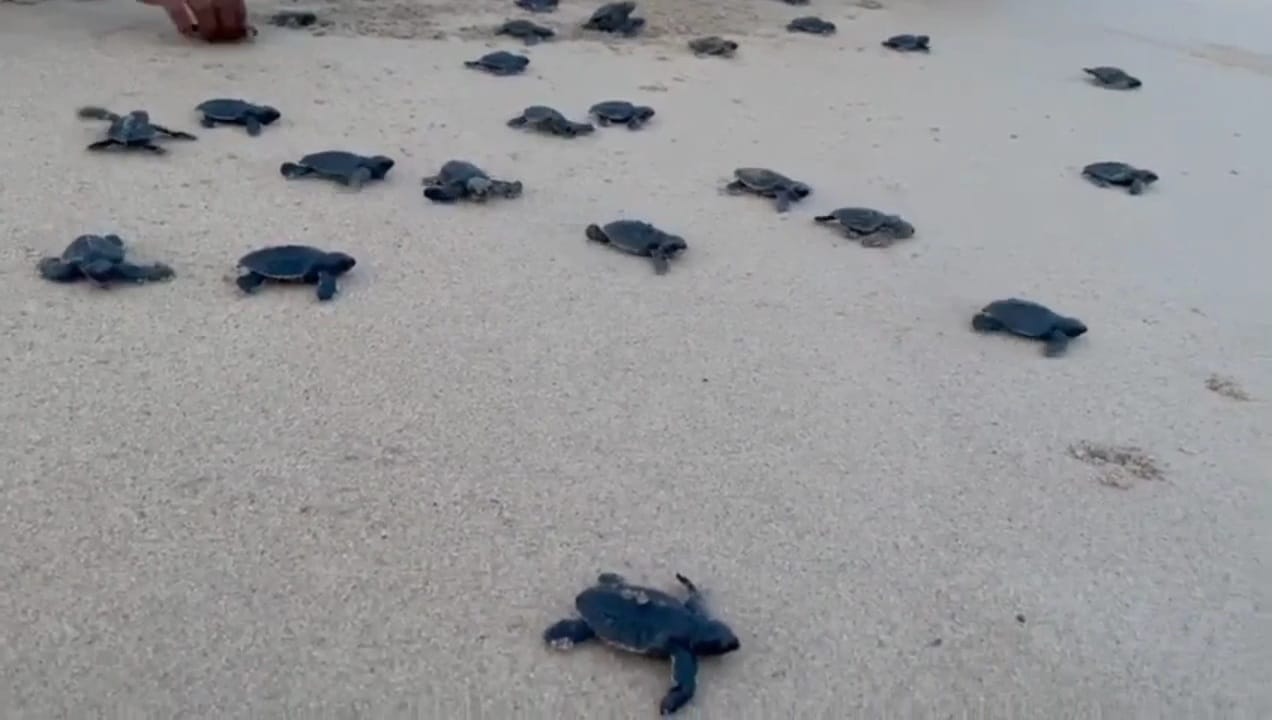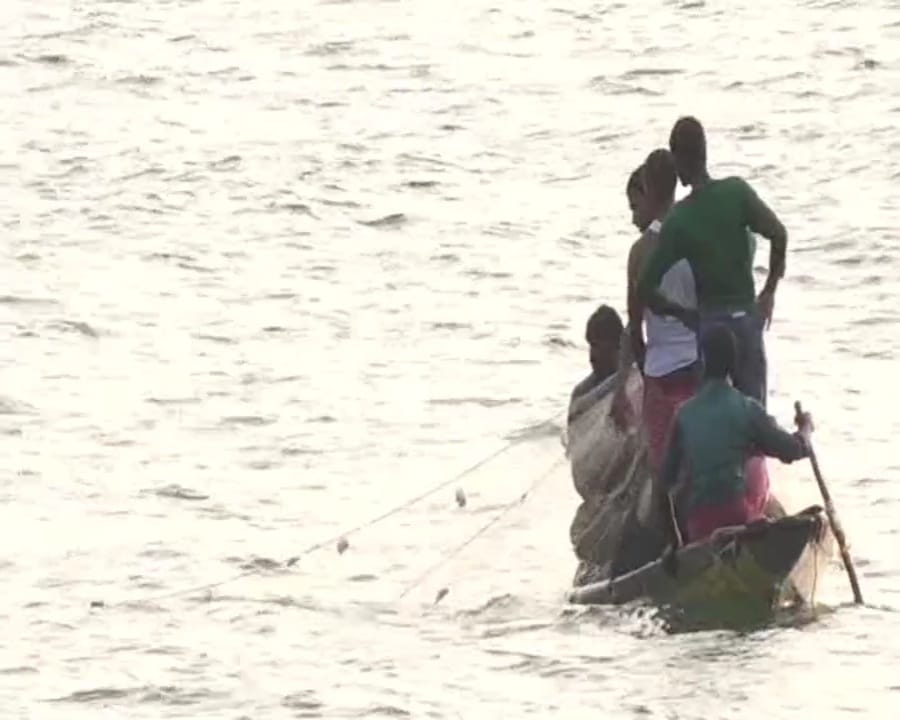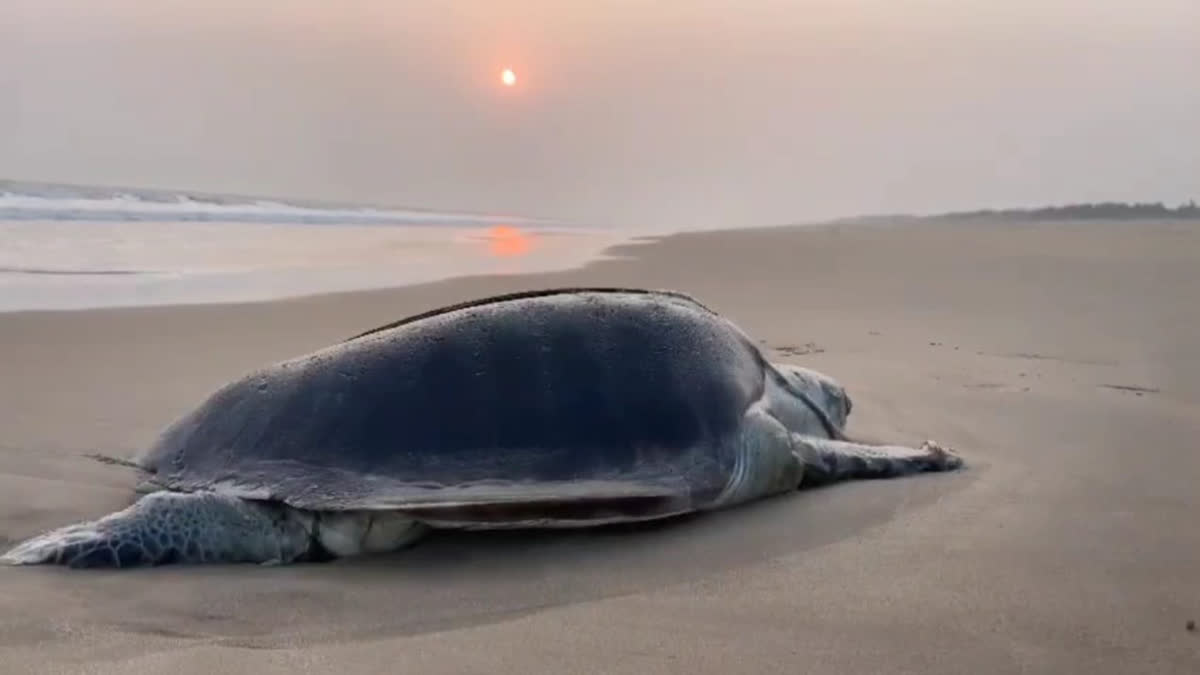Puri/Kendrapada/Bhubaneswar: The arrival of Olive Ridley turtles along Odisha’s coast has led the state to impose a seven-month restriction on fishing activities, including a complete ban on motorized boats and trawlers within a 20-kilometer stretch around nesting areas.
The turtles, which nest primarily on the beaches at the Devi River, Rushikulya estuary, and Gahirmatha Marine Sanctuary, face serious threats from fishing activities during their nesting and hatching season, which runs from November 1 to May 31. The Odisha Marine Fisheries Department and Forest Department are working closely to enforce these protections.
Restrictions in Puri
In Puri district, where the Devi River estuary is a prime nesting ground, the Fisheries Department has issued an alert to trawler operators, warning of legal action for violations. Puri District Additional Fisheries Officer Ramesh Raul explained that, as in previous years, this restriction aims to ensure a safe nesting period. Joint patrolling will be conducted by the Forest Department, Fisheries Department, and police to curb illegal fishing activities. Local trawler associations have also been notified. Raul further stated that the state provides Rs 15,000 in financial assistance to over 3,400 affected fishing families to offset income losses during the restricted period.

Meanwhile, environmentalist Saroj Kumar Jena stressed the importance of stricter monitoring, especially as previous years have seen a decline in turtle numbers. "The illegal trawlers, particularly those using chemical-laden baits and banned gill nets, pose a severe threat to the turtles. Enhanced collaboration is needed between the Fisheries Department and Forest Department to enforce restrictions more effectively, noting that marine litter, including plastic and other debris from storm surges, also needs to be cleared for safer nesting conditions.
No Fishing Zone in Kendrapada
In Kendrapara district, which hosts the Gahirmatha Marine Sanctuary, a year-round no-fishing zone, restrictions are particularly stringent. The Fisheries Department has extended the seasonal ban to the entire 20-kilometer coastline from Dhamra mouth to Devi mouth to protect the turtles during their nesting season. Rajnagar Wildlife Division has established 14 turtle protection camps along this stretch to support patrolling efforts, with dedicated staff deployed at strategic points. Joint patrolling operations by the Coast Guard, Forest Department, Marine Police, and Fisheries Department are on to prevent trawler entry into restricted waters.

Fluctuations in Numbers Cause of Concern
Principal Chief Conservator of Forests, (PCCF) Sushant Nanda said that the state is prioritizing conservation efforts as the Olive Ridley turtles’ nesting cycle begins. “From Astarang to Gahirmatha, we are enforcing strict restrictions to ensure their safety. This year’s spawning process is expected to last seven months, during which we will continue compensating affected fishermen,” he said.
Data from previous nesting seasons makes evident the fluctuation in Olive Ridley numbers. Over the years, the total nesting numbers have varied, with Gahirmatha and Rushikulya remaining the primary sites. For example:
• 2016-17: Approximately 9.75 lakh turtles nested in Gahirmatha and Rushikulya combined.
• 2016-17: Approximately 9.75 lakh Olive Ridley turtles nested across Gahirmatha and Rushikulya.
• 2017-18: The numbers rose to 11.10 lakh, reflecting a strong nesting season.
• 2018-19: The total dropped significantly to 4.51 lakh turtles, with no nesting reported at Rushikulya that year.
• 2019-20: 7.30 lakh turtles arrived, with both Gahirmatha and Rushikulya seeing substantial nesting activity.
• 2020-21: Only 3.50 lakh turtles nested at Gahirmatha, with no activity in Rushikulya.
• 2021-22: Numbers rebounded, with a combined 10.51 lakh turtles nesting across Gahirmatha and Rushikulya.
These fluctuations underscore the urgent need for conservation. Environmentalists caution that both climate factors and human activities could impact nesting trends in the coming years. “Storm surges, rising pollution levels, and illegal fishing practices are major concerns,” Jena warned, urging better cross-agency coordination to maintain a safe habitat for the turtles.
The state has established temporary camps along critical coastline points, including Babubali, Agarnasi, Satabhaya, and other areas within the Gahirmatha region, where forest and marine officials, supported by local volunteers, are stationed to monitor turtle activity. Each camp is staffed with officers and trained personnel, and a rotating patrol schedule helps prevent illegal trawler entry, especially in areas notorious for poaching or restricted fishing.
Continuous Support and Vigilance
The nesting season also brings additional challenges. According to Nanda, managing the large number of turtles and their hatchlings during the peak nesting months—typically December through March—requires continuous support and vigilance. The hatching process sees thousands of baby turtles make their way to the sea, a journey that is often hindered by human interference, predation, and light pollution.
Efforts to support the conservation of Olive Ridley turtles have been bolstered by community involvement, particularly through the Sagar Mitra initiative, which enlists locals to help monitor and report turtle sightings and any illegal activities. Despite staff shortages, additional teams from the Forest and Fisheries Departments are expected to assist as peak nesting approaches, aiming to secure a successful season for one of the world’s largest Olive Ridley nesting grounds.
Environmental advocates, however, have raised concerns about long-term strategies for sustaining Olive Ridley populations. “While temporary restrictions are crucial, a sustainable plan requires tackling pollution, stricter enforcement against illegal fishing, and enhanced public awareness campaigns,” Jena said. Additionally, community awareness programs focused on the impact of litter and beach pollution on turtle habitats are set to be implemented.
Despite all efforts, the success of this year’s season will largely depend on the consistent enforcement of restrictions and public cooperation, ensuring that the Olive Ridleys’ journey to Odisha’s shores is as safe as possible.



